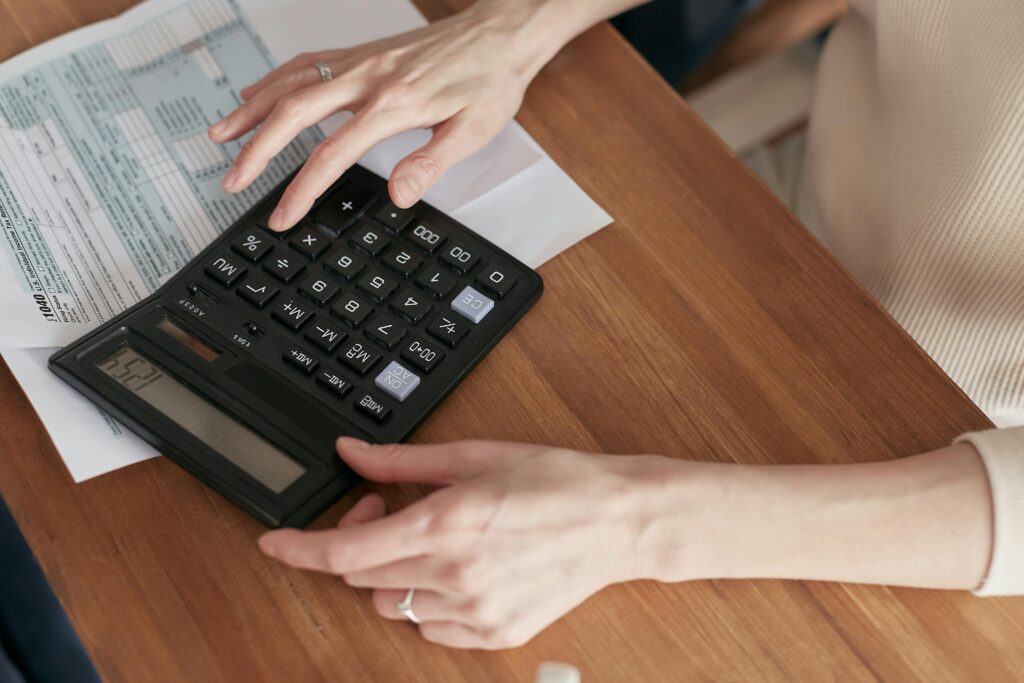The idea of using bitcoin to fund a comfortable retirement is no longer far-fetched. As fiat currencies continue to weaken under inflation and traditional pensions grow less reliable, more people are asking the same bold question. How much bitcoin would I need today to retire by 2050? It is a question worth exploring seriously, especially with bitcoin becoming an accepted form of long-term wealth storage. While the answer depends on future values, retirement targets, and personal spending habits, we can still reach a solid estimate by breaking the math down carefully.
1. Bitcoin’s Role in Long-Term Wealth Planning

Bitcoin has become more than a speculative asset. It now plays a growing role in long-term financial planning for people who want freedom from inflation and centralized banking. Since its creation in 2009, bitcoin has consistently outperformed traditional assets over long periods. Its core strength lies in its scarcity. Only 21 million bitcoin will ever exist. That makes it fundamentally different from currencies like the US dollar or euro, which can be printed indefinitely. As more people store wealth in bitcoin, its status as a reliable long-term asset keeps growing.
People are not just using bitcoin as a short-term play anymore. Retirement funds, insurance firms, and even family offices are beginning to treat bitcoin as a serious reserve asset. That shift signals the beginning of a new financial era. If this momentum continues, it is very possible that a portion of your retirement savings could come from bitcoin appreciation alone.
2. Projecting Bitcoin’s Price by 2050

To understand how much bitcoin you need today, we must consider what a single bitcoin might be worth in 2050. That number is impossible to predict with absolute certainty, but reasonable estimates help us build a plan. If bitcoin adoption continues, and supply remains capped, many analysts project values between $250,000 and $1 million per coin. Some even go higher, but for this analysis we will stick to moderate expectations.
Bitcoin undergoes “halving” events roughly every four years, cutting its mining rewards in half. Historically, these events have caused price spikes by tightening supply. If that pattern continues, and global demand rises alongside it, bitcoin could realistically hit the million-dollar mark before 2050. That would put it in the same class as some of the most coveted assets on Earth. At that point, even a few coins could secure a person’s retirement.
3. Defining What “Comfortable Retirement” Means

Comfort looks different for everyone, but most retirement planners suggest a modern middle-class retirement requires between $2 million and $3 million in today’s dollars. That estimate includes housing, food, healthcare, travel, and unexpected expenses. By 2050, inflation could push that target even higher. If you want to retire without financial worry, you may need closer to $3.5 million to $4 million, depending on your lifestyle and where you plan to live.
This estimate assumes a decent standard of living with some luxury and healthcare flexibility. It also factors in the loss of employer pensions and the uncertain future of government retirement programs. Whether you plan to live in an urban apartment or a rural cottage, your cost of living will influence how much bitcoin you’ll ultimately need.
4. How Bitcoin Can Meet Retirement Goals

Let’s say you want to retire with at least $3.5 million in 2050. If bitcoin is worth $1 million per coin by then, you would need around 3.5 coins. If it only reaches $500,000, then 7 bitcoins would be required. At a value of $250,000 per coin, you would need 14 bitcoins. Even at $100,000 per coin, you’d still need 35 coins. All of these scenarios are within the realm of possibility based on past growth rates. The key takeaway is that even partial coin ownership can become meaningful over time. You do not have to own dozens of coins. Accumulating a few whole coins, or even several fractional ones, can become a powerful retirement strategy if started early and held securely.
5. You Can Start with Less Than One Bitcoin

Contrary to what many believe, you do not need to buy an entire coin at once. It is divisible into 100 million smaller units, called satoshis. That means you can begin investing with just a few dollars. Buying small, consistent amounts over time, a strategy called dollar-cost averaging, helps smooth out volatility and build long-term value. Even a modest monthly investment of $100 in bitcoin today, spread over 25 years, could result in a substantial portfolio. With enough time, that kind of disciplined approach can quietly accumulate enough value to make a real difference in your retirement savings. It also reduces the emotional pressure of trying to time the market.
6. Your Personal Goals Will Shape the Number You Need

There is no one-size-fits-all answer for how much bitcoin you need. If you plan to retire early, travel often, or live in a high-cost city, you will need more. If you plan to downsize, live simply, or move to a country with a lower cost of living, you may need much less. Lifestyle inflation, medical care, and rising living expenses should all be part of your calculation.
Many people also forget to account for emergencies and unexpected expenses in retirement. Whether it is long-term care, home repairs, or family support, these situations require extra savings. Bitcoin can help fill that gap, but only if you plan for a wide range of outcomes. The more flexible your plan, the safer your retirement.
7. Diversification Still Matters

Even if you are bullish on bitcoin, you should not rely on it alone. Retirement savings should include multiple asset types. Stocks, property, gold, and cash still serve vital roles in a balanced portfolio. Bitcoin can be a hedge against inflation and currency risk, but it is still volatile. Using it as one component in a diversified plan gives you the best chance at long-term success. A portfolio with 10 to 20 percent bitcoin exposure is a practical target for those serious about building future wealth. This approach limits downside risk while still capturing upside potential. Bitcoin becomes even more useful when it complements other reliable assets rather than replacing them entirely.
8. Safe Storage Strategies for Long-Term Bitcoin Holdings

Owning bitcoin for retirement means holding it safely for decades. The best method is using cold storage wallets, such as hardware wallets. These are physical devices that store your bitcoin offline, out of reach from hackers. They are not connected to the internet, so they protect against most online threats. Keeping backups and written recovery phrases in separate secure locations is equally important.
You should also consider estate planning. If something happens to you, your family should be able to access your funds. That means documenting everything properly and ensuring your bitcoin holdings are included in your will or trust. Long-term ownership is not just about growing your investment. It is also about protecting it.
Read More: Start Saving Smarter: Retirement Milestones to Hit at Every Age
9. The Importance of Long-Term Thinking

Bitcoin has gone through multiple booms and busts since its launch. Yet over time, the overall trajectory has pointed upward. Each downturn has shaken out speculators and strengthened long-term holders. That makes patience one of the most valuable traits in bitcoin investing. The people who benefit the most from bitcoin are usually the ones who hold it through cycles and ignore short-term noise.
Retirement planning is not about reacting to headlines or chasing quick gains. It is about preparing steadily for a distant goal. If you can keep a steady hand, avoid panic selling, and stick to your plan, bitcoin can become a reliable vehicle for building future wealth. Thinking in decades, not days, is the best way to use bitcoin wisely.
10. Planning for Taxes and Regulation

Bitcoin gains are taxable in most countries. While regulations differ from place to place, profits from selling bitcoin are usually treated as capital gains. This means you will owe tax on any growth when you sell or use the asset. Over 25 years, that could amount to a sizable tax bill unless you plan ahead.
Keeping track of every bitcoin purchase and sale helps when tax season arrives. You can also explore retirement-specific accounts that allow you to hold bitcoin with tax advantages, depending on your jurisdiction. As regulation evolves, new rules may emerge. Staying informed protects both your bitcoin and your future plans.
11. Why Today Is the Right Time to Start

If you wait until bitcoin hits new highs to invest, the cost of entry may become too steep. Buying while prices are still relatively low gives you the best chance at meaningful returns. You do not need to wait for a market dip. Just starting with a small, consistent investment today could compound into something life-changing by 2050. Delaying retirement planning is one of the biggest financial mistakes people make. By starting early, you give your bitcoin more time to appreciate and smooth out price swings. That extra time adds power to your portfolio. You do not need to be rich to start. You just need to begin.
12.Your Bitcoin Retirement Strategy

To retire comfortably in 2050 using bitcoin, you must start with a realistic goal and stick with it. If bitcoin reaches $1 million per coin, owning 3 to 4 coins today could make you financially free. If it rises more modestly, owning between 7 and 14 coins may still meet your needs. If growth slows, you might need as much as 30 or more coins.
Even small amounts of bitcoin, invested steadily, could grow into a substantial asset base. Bitcoin rewards consistency, patience, and long-term thinking. The earlier you begin, the more options you have when 2050 arrives. While the future price of bitcoin cannot be known for certain, its role in retirement planning is becoming more real every year.
Read More: 7 Financial Regrets Older Americans Say They’d Go Back and Fix
Disclaimer: This article was created with AI assistance and edited by a human for accuracy and clarity.

